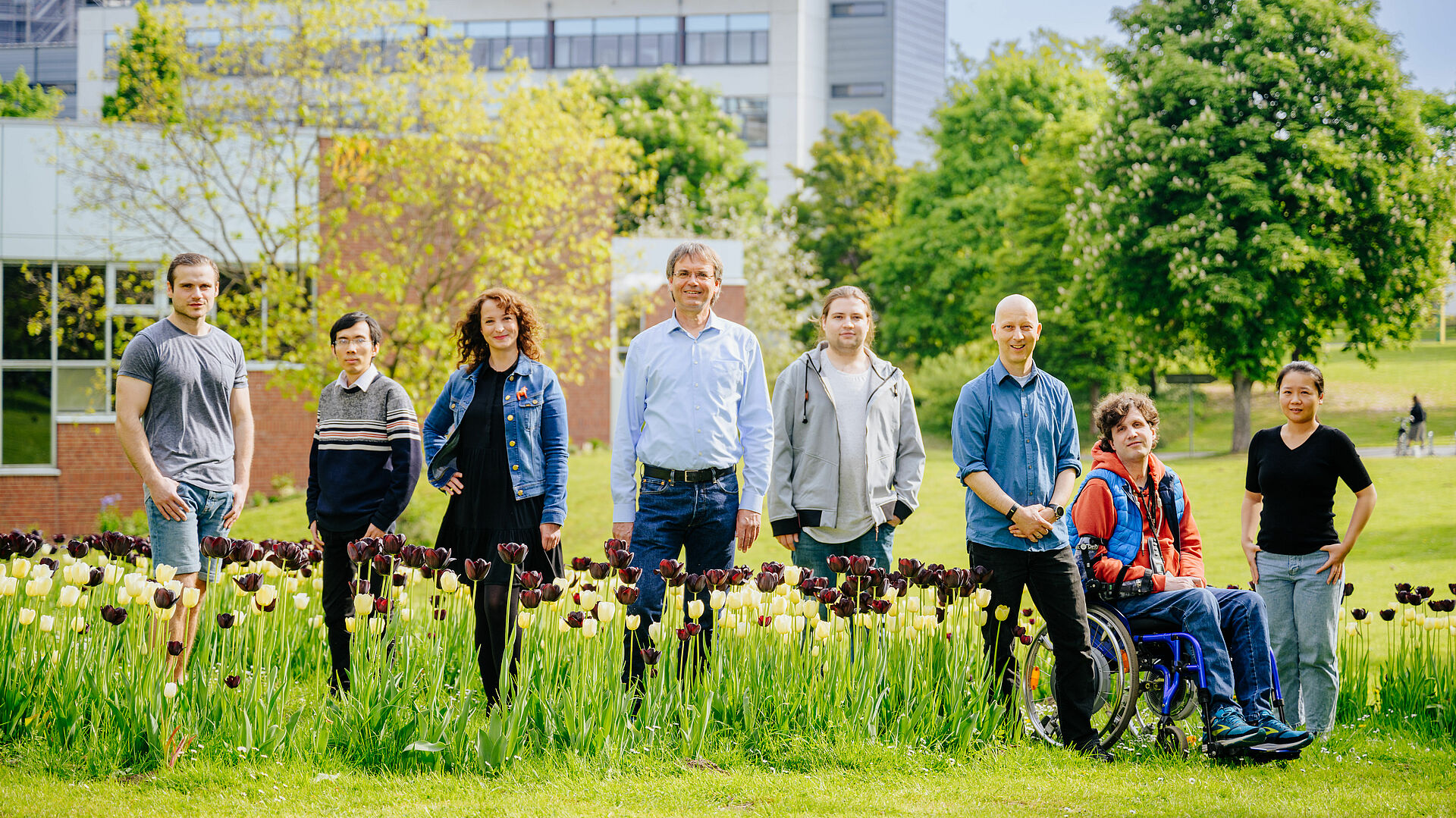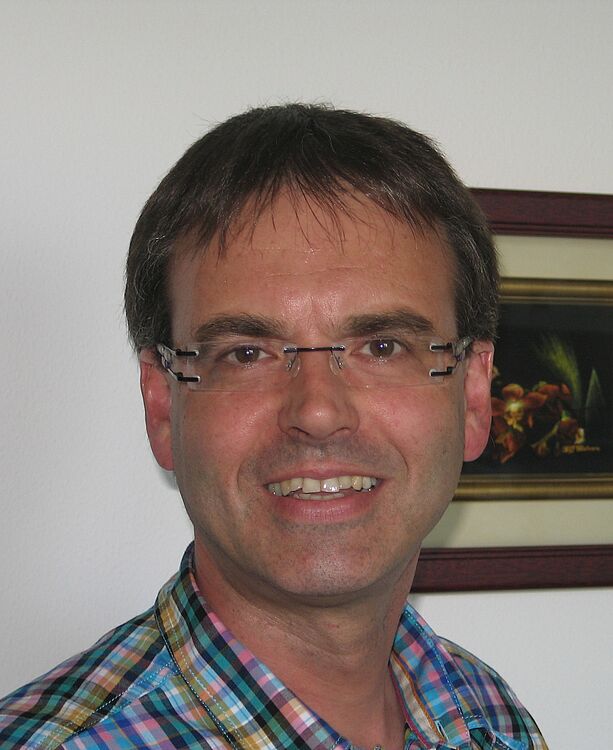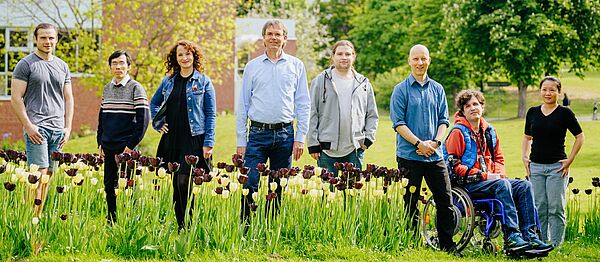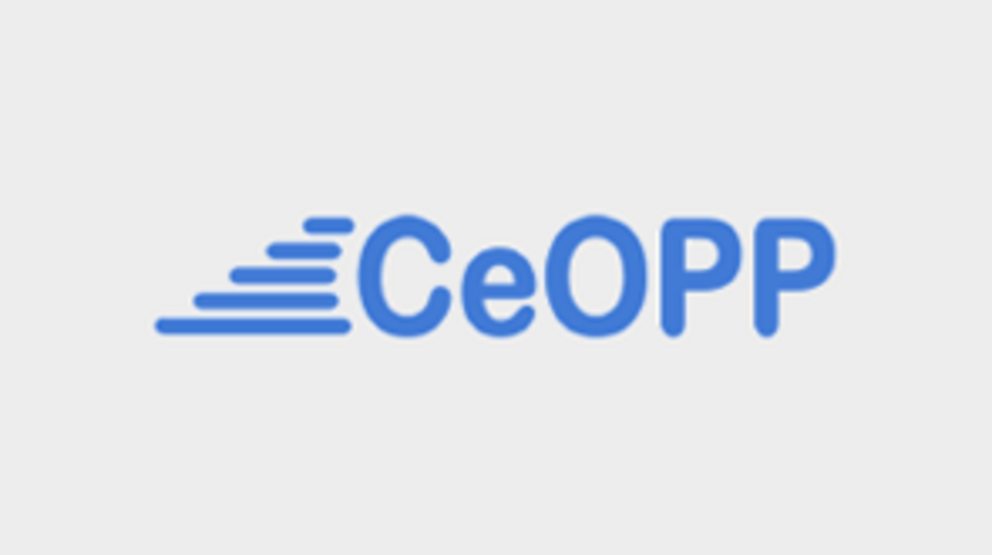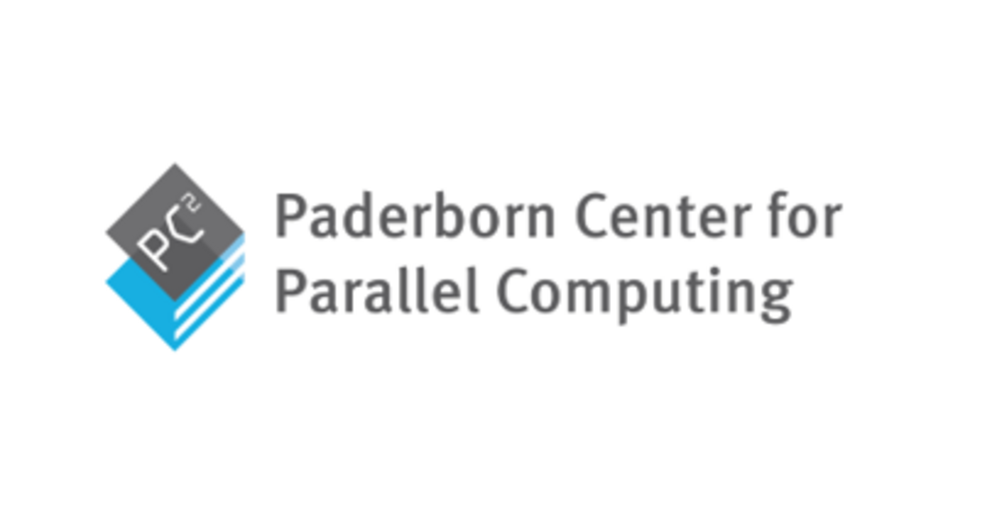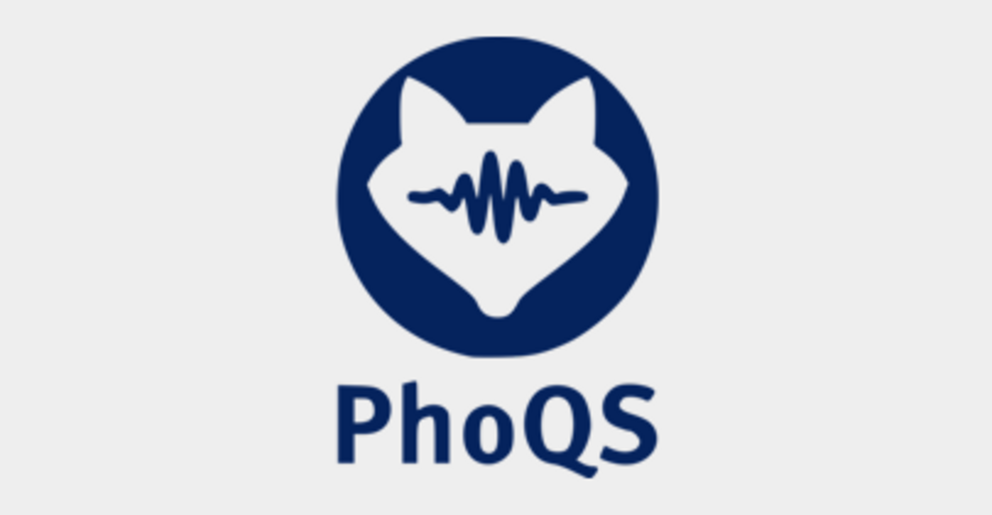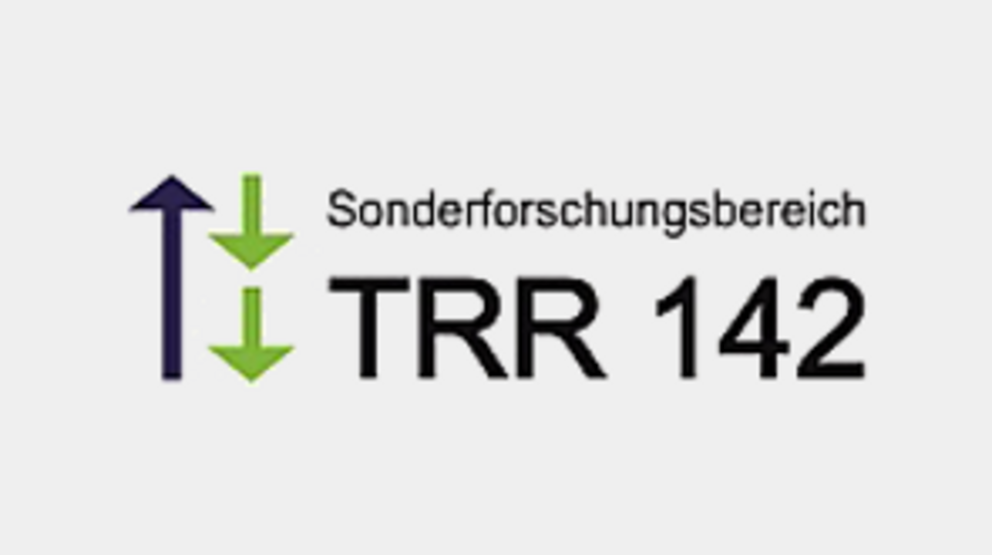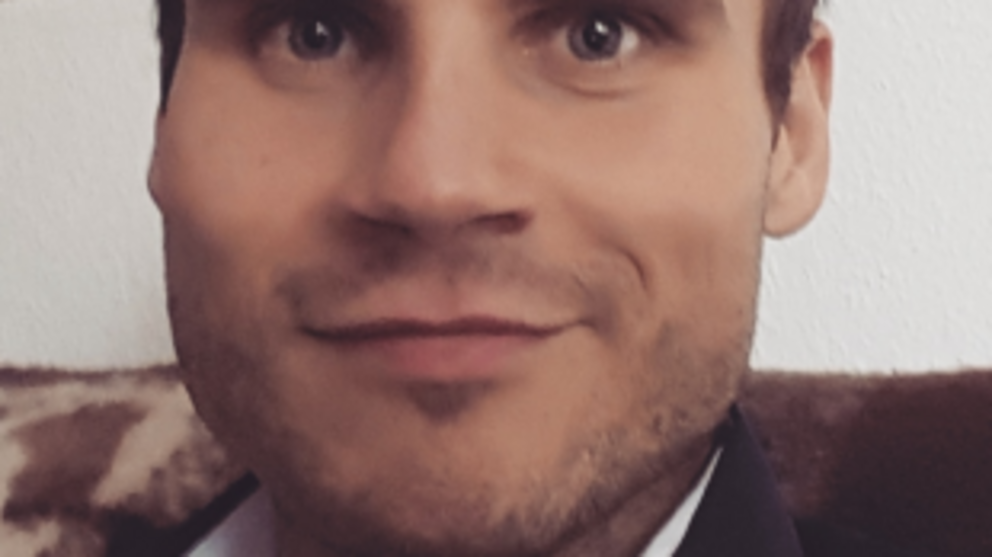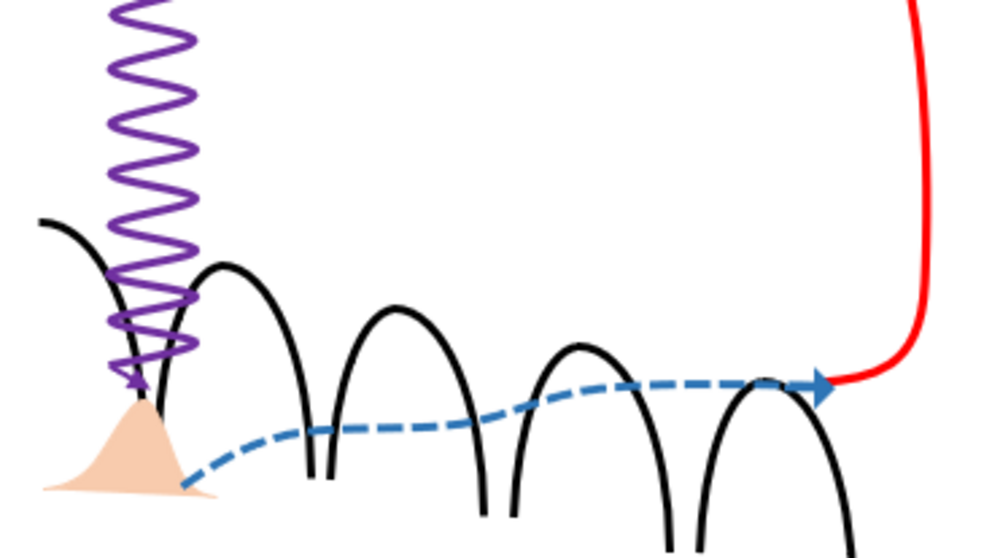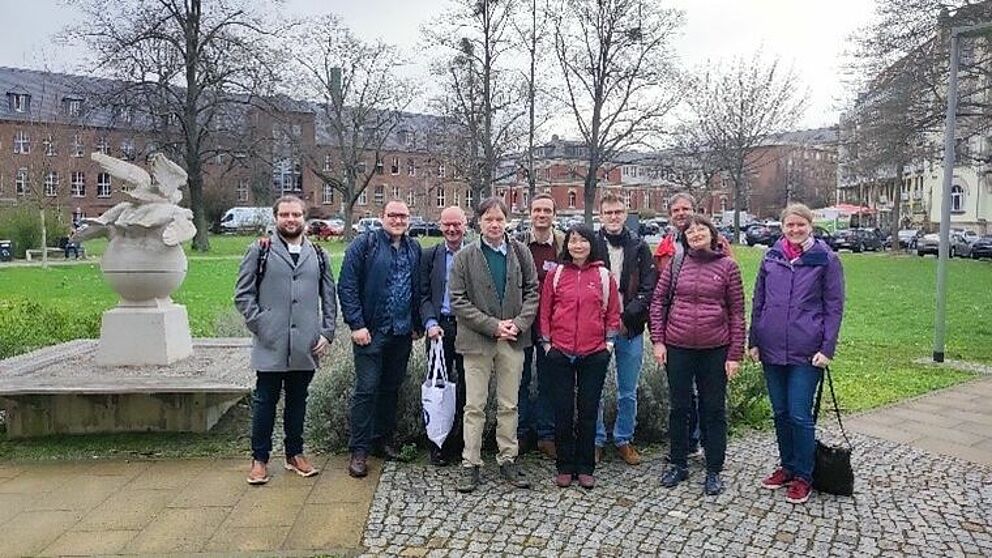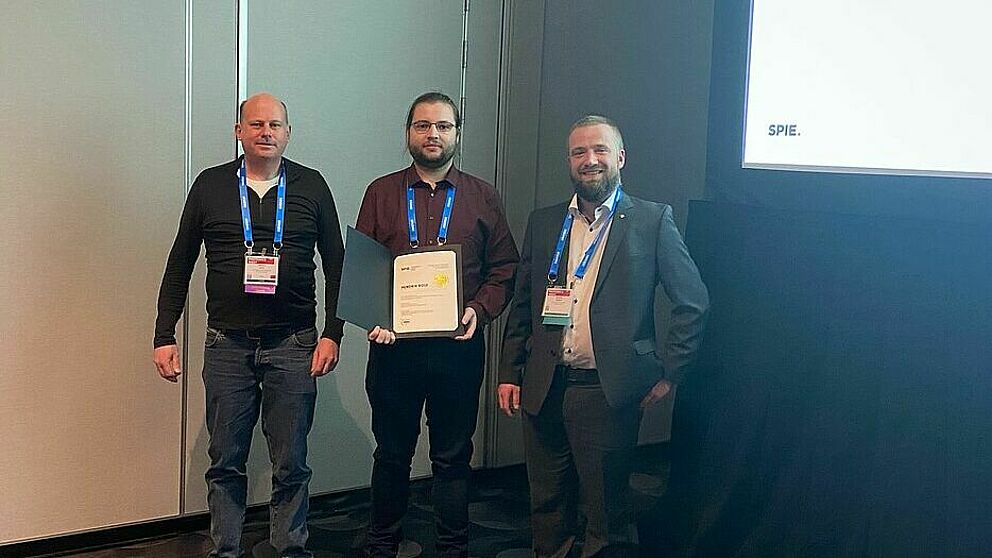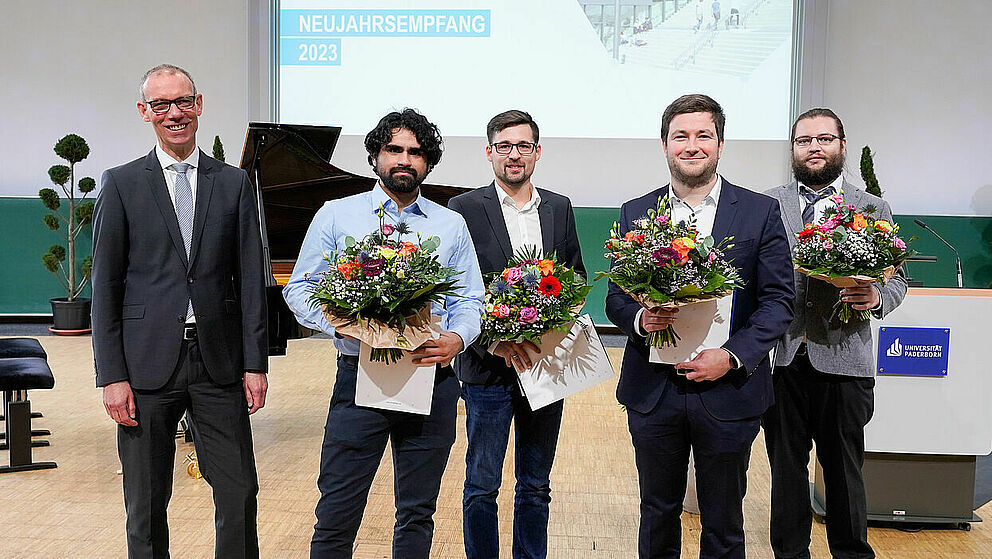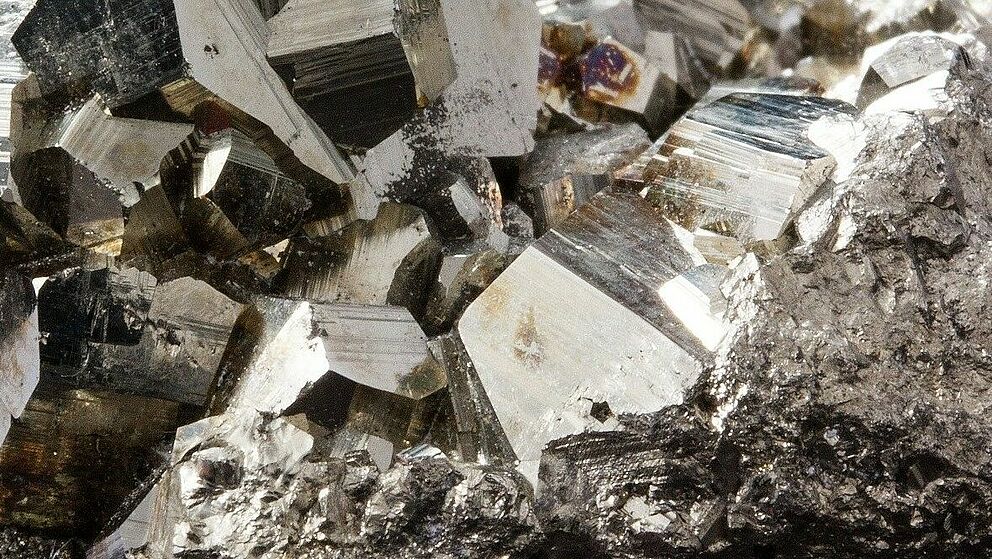Forschung
Wir interessieren uns für optische, elektronische und quantenoptische Eigenschaften, die wir durch mikroskopische Theorie und numerische Simulationen analysieren. Zum Beispiel untersuchen wir Situationen, in denen Materie durch sehr kurze Laserpulse angeregt wird. Dies ermöglicht es, sehr schnelle dynamische Prozesse, die auf Zeitskalen von wenigen Femtosekunden (1 fs = 10-15 s) oder sogar im Bereich von Attosekunden (1 as = 10-18 s) ablaufen, detailliert zu untersuchen. Nichtlinearitäten, die aus der Wechselwirkung mit sehr intensiven Lichtimpulsen resultieren, können die optischen Eigenschaften drastisch verändern. Neben rein optischen Prozessen sind auch optisch induzierte Transportphänomene von großem Interesse. Ein wichtiger Fokus ist zudem die Analyse der Wechselwirkung mit Quantenlicht, die für neuartige Anwendungen in der Quantentechnologie sehr vielversprechend ist.
Team
Wir sind ein vielfältiges internationales Team, das die unterschiedlichen Themen und Projekte bearbeitet.
Publikationen
Vollständige Liste im Research Information System öffnen
Siehe auch ORCID profile, ResearcherID und google scholar profile von Torsten Meier
Auswahl aktueller Publikationen
Sub-cycle strong-field tunneling dynamics in solids,
S. Yang, X. Liu, H. Zhang, X. Song, R. Zuo, T. Meier, and W. Yang,
Optics Express 32, 15862 (2024)
Theory of Multimode Squeezed Light Generation in Lossy Media,
D. A. Kopylov, T. Meier, and P. R. Sharapova,
arXiv:2403.05259 [quant-ph]
Optical Stark effect in type-II semiconductor heterostructures,
F. Schäfer, A. Trautmann, C. Ngo, J.T. Steiner, C. Fuchs, K. Volz, F. Dobener, M. Stein, T. Meier, and S. Chatterjee,
Phys. Rev. B 109, 075301 (2024)
Microscopic simulations of the dynamics of excitonic many-body correlations coupled to quantum light,
H. Rose, P. Sharapova, and T. Meier,
Proceedings of the SPIE 12884, 1288403 (2024).
Accelerating the analysis of optical quantum systems using the Koopman operator,
A. Hunstig, S. Peitz, H. Rose, and T. Meier,
arXiv:2310.16578
Chirped Bloch-Harmonic oscillations in a parametrically forced optical lattice,
U. Ali, M. Holthaus, and T. Meier,
Phys. Rev. Research 5, 043152 (2023).
Phase sensitivity of spatially broadband high-gain SU(1,1) interferometers,
D. Scharwald, T. Meier, and P. R. Sharapova,
Phys. Rev. Research 5, 043158 (2023).
Excitonic anomalous currents in semiconductor quantum wells,
C. Ngo, S. Priyadarshi, H. T. Duc, M. Bieler, and T. Meier,
Phys. Rev. B 108, 165302 (2023).
Temporal sorting of optical multi-wave-mixing processes in semiconductor quantum dots,
S. Grisard, A.V. Trifonov, H. Rose, R. Reichhardt, M. Reichelt, C. Schneider, M. Kamp, S. Höfling, M. Bayer, T. Meier, and I.A. Akimov,
ACS Photonics 10, 3161 (2023).
Revealing the nonadiabatic tunneling dynamics in solid-state high harmonic generation,
R. Zuo, X. Song, S. Ben, T. Meier, and W. Yang,
Physical Review Research 5, L022040 (2023).
Control of the electron dynamics in solid-state high harmonic generation on ultrafast time scales by a polarization-skewed laser pulse,
X. Song, S. Yang, G. Wang, J. Lin, L. Wang, T. Meier, and W. Yang,
Optics Express 31, 18862 (2023).
Gain recovery dynamics in active type-II semiconductor heterostructures,
F. Schäfer, M. Stein, J. Lorenz, F. Dobener, C. Ngo, J. T. Steiner, C. Fuchs, W. Stolz, K. Volz, T. Meier, J. Hader, J.V. Moloney, S.W. Koch, and S. Chatterjee,
Applied Physics Letters 122, 082104 (2023).
Quantum-optical excitations of semiconductor nanostructures in a microcavity using a two-band model and a single-mode quantum field,
H. Rose, A.N. Vasil’ev, O.V. Tikhonova, T. Meier, and P. R. Sharapova,
Phys. Rev. A 107, 013703 (2023).
Manipulation of nonautonomous nonlinear wave solutions of the generalized coupled Gross–Pitaevskii equations with spin–orbit interaction and weak Raman couplings,
D. Belobo Belobo and T. Meier,
Results in Physics 51, 106655 (2023).
Aktuelle Projekte
Zwei Projekte im DFG Transregio TRR 142/3 Tailored nonlinear photonics: From fundamental concepts to functional structures:
A02 "Nonlinear spectroscopy of semiconductor nanostructures with quantum light" (Akimov (TU Dortmund), Meier);
A10 "Nonlinear strong-field dynamics of atomically thin transition metal dichalcogenides" (Lange & Ruppert (TU Dortmund), Meier).
PI im Projekt "Photonisches Quantencomputing" (PhoQC), das vom Ministerium für Kultur und Wissenschaft (MKW) des Landes Nordrhein-Westfalen gefördert wird.
Projekt zur Förderung der Mobilität durch das Sino-German Center for Research Promotion (SGC) (joint venture of the National Natural Science Foundation of China (NSFC) and the DFG), Three-Dimensional Microscopic Simulations of High-Harmonic Generation and Strong Field Phenomena in Semiconductors, zusammen mit Prof. Xiaohong Song (Hainan University).
Eine vollständige Liste finden Sie in unserer Projektdatenbank
Netzwerke
NEWS
Kontakt
Prof. Dr. Torsten Meier
Computational Optoelectronics and Photonics
Pohlweg 55
33098 Paderborn
